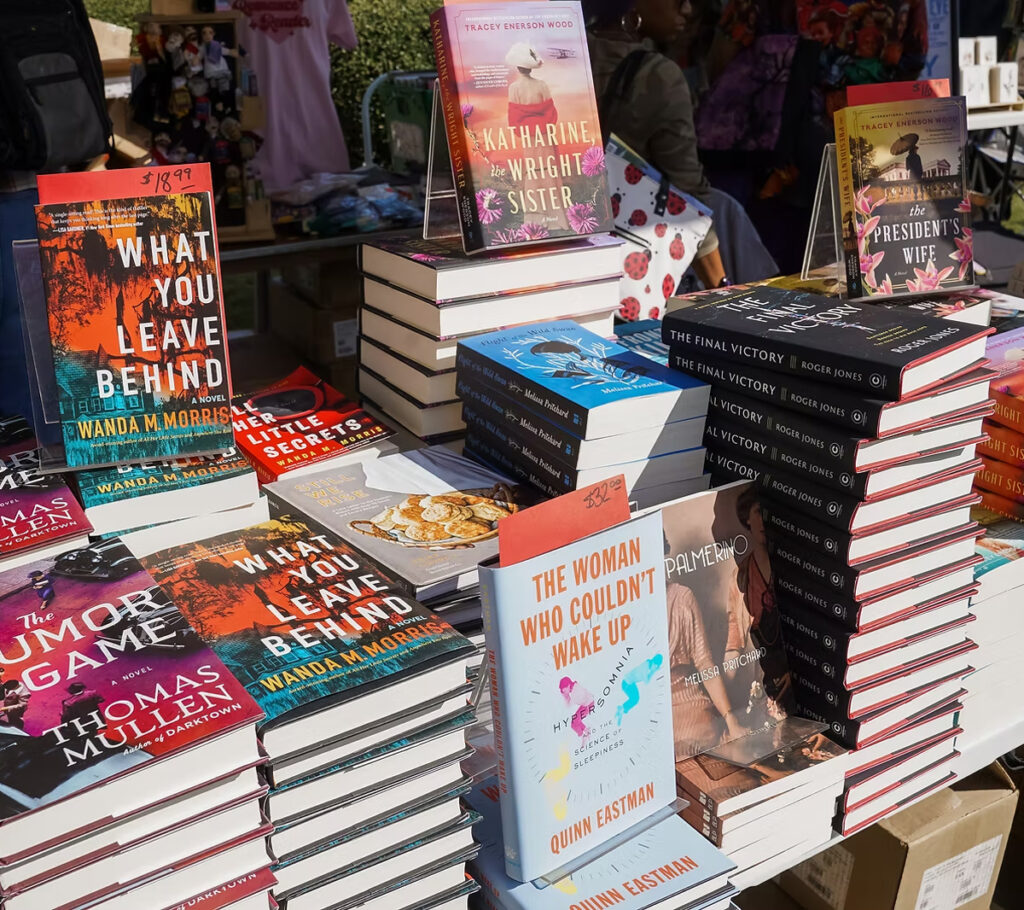Conversation with renowned storyteller Brandon Stanton, what Decatur means to him
By Michael J. Pallerino

When he closes his eyes, Brandon Stanton imagines he sees what they see. In the photographs and stories that he has shared over the years, refugees have always been a part of the tale. Those who carry the weight of an interrupted life, surrounded in uncertainty, loss and the profound weight of survival, resilience and hope thrust upon their shoulders. Each, he imagines, when they close their eyes dream of a better place. Maybe, it is America. Maybe, it is a place like Decatur.
Growing up in Marietta, graduating from The Walker School and majoring in history at the University of Georgia, Stanton set out into the world, working his way through the maze of corporate life and catching snapshots of how the world worked on a Wall Street level. It wasn’t until he lost his high-paying job as a bond trader in Chicago in 2008 that the road he was to travel would take shape. Turning to photography as an outlet, his personal escape became a calling.

With little more than curiosity and a willingness to listen, he started approaching strangers, capturing their portraits and life stories. The project gained momentum, and by 2010, Humans of New York was born. Today, the platform boasts more than 30 million followers and has spawned multiple bestselling books, the latest, “Dear New York,” is set for release this fall. From bond trader to storyteller, he never imagined he would end up interviewing tens of thousands of people in 40 different countries around the world.
“The moment I knew this was all real is when my mother knew it would work, and then my first book became a bestseller,” he recalls. “I started it at the dawn of social media—it was a very new medium back then. And when I saw that every day, a handful of new people who I’d never met were ‘following’ my work, I knew that as long as I kept working and kept in a rhythm, it was only a matter of time.”
For the past decade—one in which The Washington Post recognized Humans of New York as one of the most influential art projects in a decade—Stanton’s stories of human experience have captivated millions, and have even helped raise more than $20 million for needy people through his work.
But in recent years, Stanton found himself living and telling a different story—one that hits much closer to home. Stanton’s move to Decatur from New York was, at first, unplanned. “We originally thought the move was going to be very temporary. We wanted to spend a few months in Georgia to be near my parents. But after renting an Airbnb in Oakhurst, where my brother lived, we fell in love with the neighborhood. Like so many others, my wife, Erin, and I realized that Decatur is one of the best places in the world to raise our three children.”
Defined by its quiet neighborhood streets, the proximity to Atlanta, the schools, community events like Porchfest, the Soapbox Derby, and Halloween, Stanton knew he was home. The street where he lives, Garland Avenue, holds an especially warm place in his heart. From annual traditions like the Garland Games—organized by the DiBello family—where the street shuts down for a day of friendly competition and late-night gatherings, to his mailperson K.K., whose daily interactions on his afternoon walks has made her one of his close friends, Decatur has given Stanton something he didn’t always find in New York—a rhythm of familiarity.

“In New York, it’s easy to get lost in the crowd,” Stanton says. “In Decatur, you run into the same people organically as you go about your day. These rhythmic interactions help foster deeper relationships. Almost all the stories I share on ‘Humans of New York’ are from New York. But there are interesting stories everywhere. The common denominator between people whose stories I’m able to share isn’t that they’re interesting; it’s that they’re honest. As long as someone is honest, there’s enough drama, overcoming and transformation in every life to make for a good story.”
His creative process has evolved significantly since the early days. When he started Humans of New York, he had only been photographing for a few months. Today, along with being an iconic photographer, he is a bestselling author. During his time in Decatur, Stanton shifted his approach. “For a couple of years, I was doing remote interviews with people worldwide. Then I started leaning more into writing. Instead of a paragraph per person, I started doing deep-dive interviews, crafting short stories around them.”
While “Dear New York” is his latest major project, Stanton remains open to the unknown, including to his journey back to the Big Apple. “I’ve never been sure what’s next. None of the discoveries or innovations that have led to the success of Humans of New York came from a flash of inspiration. They emerged from practicing the craft of photography (and writing), every day. The streets of New York are my office. And like so many people, I’m having to return to the ‘office’ after years in Decatur.”
As he looks for the next challenge, he understands that Decatur embodies something even greater than its small-town charm, a place that he says will always feel like home. “Those refugees I’ve interviewed and people who dream of coming to America, I imagine that when they close their eyes and picture America, a place very much like Decatur comes to mind.”
From Garland Avenue, New York and beyond, Stanton will continue to tell their stories—one conversation at a time.







